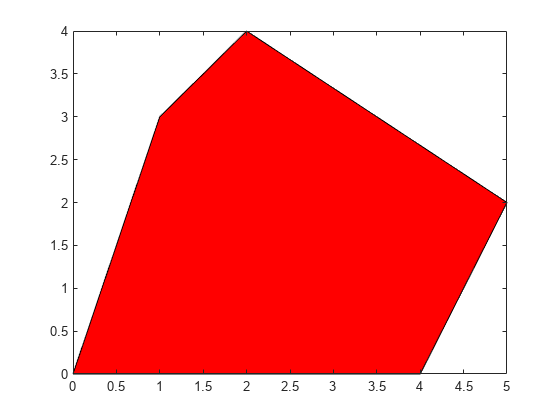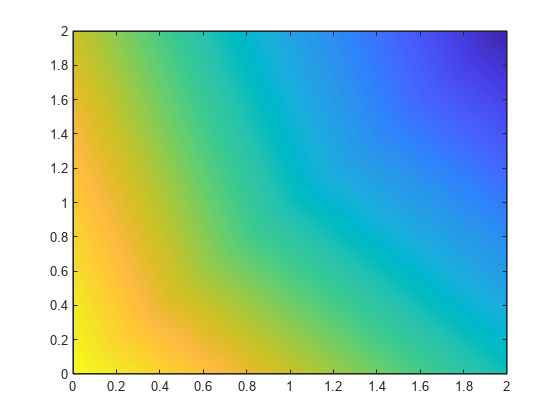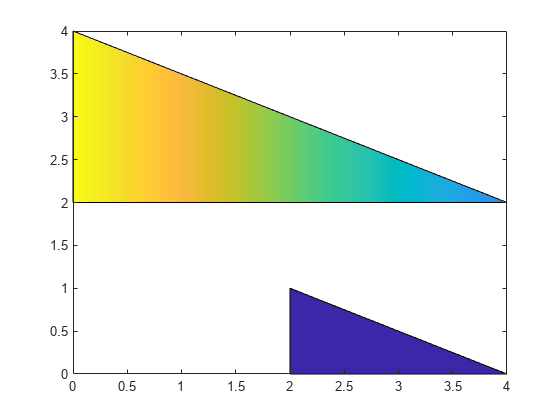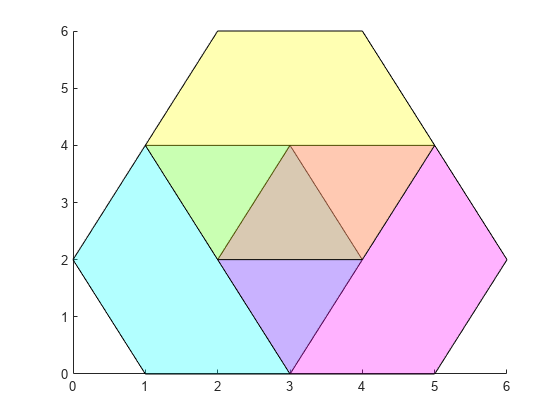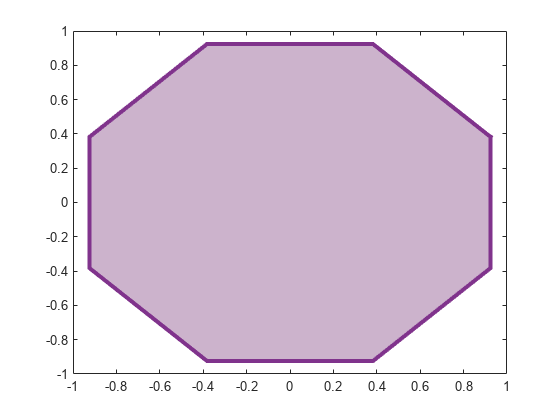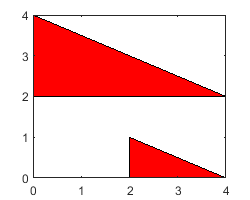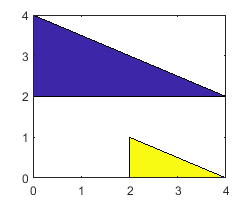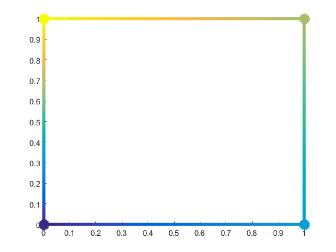fill
채워진 2차원 패치 생성
설명
fill(___,는 속성을 설정하는 하나 이상의 이름-값 인수를 사용하여 패치를 수정합니다. 위에 열거된 구문에 나와 있는 입력 인수를 원하는 대로 조합하여 패치를 지정할 수 있습니다. 예를 들어, Name,Value)fill(X,Y,C,'LineWidth',2)는 모든 패치를 둘러싸고 2점 경계를 지정합니다. 속성 목록은 Patch 속성 항목을 참조하십시오.
fill(는 현재 좌표축(gca) 대신 ax,___)ax로 지정된 좌표축에 다각형 영역을 플로팅합니다. ax 인수는 위에 열거된 구문의 입력 인수 조합보다 먼저 나올 수 있습니다.
예제
입력 인수
이름-값 인수
출력 인수
대체 기능
몇몇 함수는 fill의 모든 기능과 함께 다각형을 플로팅하고 조작하고 쿼리할 수 있는 추가 옵션도 제공합니다. 해당하는 경우 fill 자리에 다음과 같은 함수를 사용하십시오.
정다각형을 만들려면
nsidedpoly를 사용하십시오. 이 함수는 정다각형을 만드는 과정을 간소화하며, 플로팅된 다각형의 위치와 차원을 관리할 수 있는 추가 옵션을 제공합니다.nsidedpoly는polyshape객체를 만들고, 다각형 생성 후polyshape의 위치와 반지름, 변 길이를 변경할 수 있는 추가 옵션을 제공합니다.nsidedpoly로 만드는polyshape은polyshape의 모든 속성뿐만 아니라nsidedpoly전용 속성을 사용하여 조작할 수 있습니다.불규칙한 다각형을 만들려면
polyshape을 사용하십시오. 이 함수는 다각형을 정의할 수 있는 추가 옵션을 제공합니다.polyshape은polyshape객체를 만드는데 이 함수에는 다각형 생성 후 다각형을 쿼리하고 변경할 수 있는 추가 속성과 객체 함수를 가집니다. 전체 목록을 보려면polyshape항목을 참조하십시오.fill의 방식처럼Patch객체를 만들려면patch를 사용하십시오. 이 함수는 면과 꼭짓점 데이터로 2차원 패치와 3차원 패치를 모두 정의할 수 있는 추가 옵션을 제공합니다.

